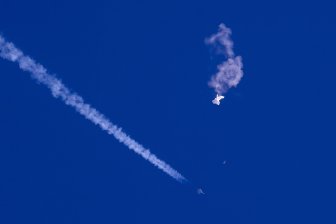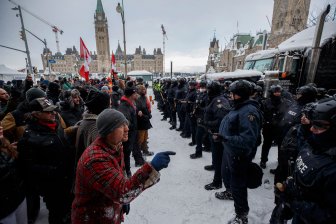Backcountry experts are warning the public of serious avalanche risks heading into the Family Day long weekend in the wake of a pair of fatal avalanches this week that claimed four lives.
Two skiers were killed in an area known as Terminator 2.5, outside of the boundaries of Kicking Horse Ski Resort near Golden on Thursday, and two others were killed over the weekend skiing near Potato Peak, about 200 kilometres southwest of Williams Lake.
One of the people killed on the weekend was a member of the Central Cariboo Search and Rescue (CCSAR) group.
Read more:
Fatal slide near Golden brings B.C.’s 2023 avalanche death toll to 9
Read next:
Part of the Sun breaks free and forms a strange vortex, baffling scientists
“Our team has been feeling it on every level. The heartbreak of having to respond to the call as well as the loss of the member has been devastating for all of us, and being felt throughout all of the membership,” CCSAR spokesperson Debra Bortolussi told Global News on Friday.
“This year has been full of extreme risk that’s been very unforgiving and is having horrific consequences. No matter the skill level, we would like anyone to really evaluate what they are doing.”
This week’s tragedies brought the season’s death toll to nine, higher than the 10-year average of seven avalanche-related deaths per season. Only two seasons, 2011-2012 (10) and 2015-2016 (14) have proven deadlier in the last decade.

Staff with Avalanche Canada, the non-profit organization focused on avalanche forecasting and safety, say the heightened slide risk has been here since early in the season and is unlikely to subside for months.
The problem is a weak layer of snow that developed due to the fairly dry and cold conditions in November, which was subsequently coated by a shallower than average snowpack — a system known as a “deep persistent slab,” explained Avalanche Canada forecaster Tyson Rettie.
That layer can be easily triggered, he said, and worse, can be difficult to recognize.
Read more:
Victim of Potato Peak fatal avalanche identified as search-and-rescue volunteer
Read next:
Exclusive: Widow’s 911 call before James Smith Cree Nation murders reveals prior violence
“You don’t necessarily see signs of instability before seeing large disruptive avalanches — you could recreate in the mountains all day and you wouldn’t necessarily get the classic signs like natural avalanches or human-triggered avalanches …. the first sign of instability could be that large avalanche,” Rettie said.
“The strategy to avoid being involved in a large avalanche like this is avoidance. You have to be able to identify the terrain features where these kinds of avalanches are more likely to avoid them. It’s not necessarily a case of it’s not good to go and then later in the week, it is good to go. It’s a case of it’s not good to go at all.”
Rettie said the slab is most dangerous in areas with a shallower snowpack, often at the upper treeline or lower alpine regions and often in areas that are wind-affected.

He said some experts are comparing the situation to the deadly 2003 avalanche season, when a record 29 people died in B.C. and Alberta mountains, a horrific toll that led to the foundation of Avalanche Canada.
That season, like this one, was also plagued by a deep persistent slab system and also saw multiple slides that killed more than one person, he said.
“This avalanche problem will linger through most of the season, and there are terrain features where you are more likely to trigger this type of avalanche,” Rettie warned.
“We’re recommending people really take the extra time to think about how big of an avalanche a particular piece of terrain could produce and try and reduce their overall risk by exposing less people at a time to any given slope, so skiing things one at a time: if you’re sledding, having the rest of your group in a safe spot (and) … when crossing avalanche terrain … crossing one person at a time.”
Bortolussi urged people to keep their recreation activities to safe areas and said anyone in the backcountry should both have the right equipment and leave a trip plan with friends or family in case there is an emergency.
You can learn more about proper equipment, training and avalanche safety at Avalanche Canada’s website.
A GoFundMe campaign has been launched to support the Cariboo Search and Rescue member’s family.
© 2023 Global News, a division of Corus Entertainment Inc.
Disclaimer: No copyright infringement intended. All rights and credits reserved to respective owner(s).
























Add Comment